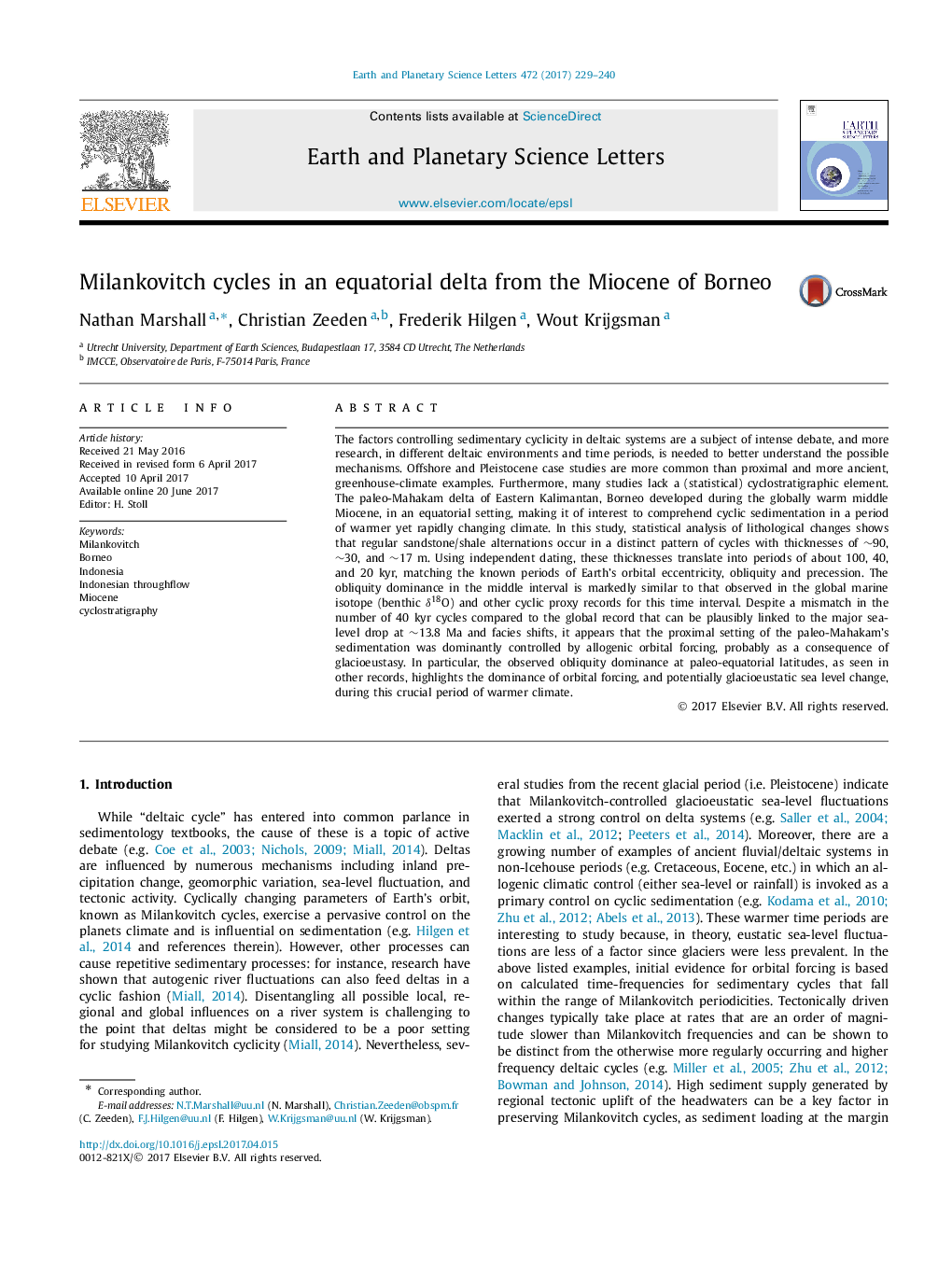| کد مقاله | کد نشریه | سال انتشار | مقاله انگلیسی | نسخه تمام متن |
|---|---|---|---|---|
| 5779514 | 1634684 | 2017 | 12 صفحه PDF | دانلود رایگان |

- We present cyclostratigraphy of a Miocene equatorial, proximal, delta.
- Orbital forcing drives cyclic sedimentation.
- Glacioeustatic sea level changes likely regulated delta progradation cycles.
The factors controlling sedimentary cyclicity in deltaic systems are a subject of intense debate, and more research, in different deltaic environments and time periods, is needed to better understand the possible mechanisms. Offshore and Pleistocene case studies are more common than proximal and more ancient, greenhouse-climate examples. Furthermore, many studies lack a (statistical) cyclostratigraphic element. The paleo-Mahakam delta of Eastern Kalimantan, Borneo developed during the globally warm middle Miocene, in an equatorial setting, making it of interest to comprehend cyclic sedimentation in a period of warmer yet rapidly changing climate. In this study, statistical analysis of lithological changes shows that regular sandstone/shale alternations occur in a distinct pattern of cycles with thicknesses of â¼90, â¼30, and â¼17 m. Using independent dating, these thicknesses translate into periods of about 100, 40, and 20 kyr, matching the known periods of Earth's orbital eccentricity, obliquity and precession. The obliquity dominance in the middle interval is markedly similar to that observed in the global marine isotope (benthic δ18O) and other cyclic proxy records for this time interval. Despite a mismatch in the number of 40 kyr cycles compared to the global record that can be plausibly linked to the major sea-level drop at â¼13.8 Ma and facies shifts, it appears that the proximal setting of the paleo-Mahakam's sedimentation was dominantly controlled by allogenic orbital forcing, probably as a consequence of glacioeustasy. In particular, the observed obliquity dominance at paleo-equatorial latitudes, as seen in other records, highlights the dominance of orbital forcing, and potentially glacioeustatic sea level change, during this crucial period of warmer climate.
Journal: Earth and Planetary Science Letters - Volume 472, 15 August 2017, Pages 229-240